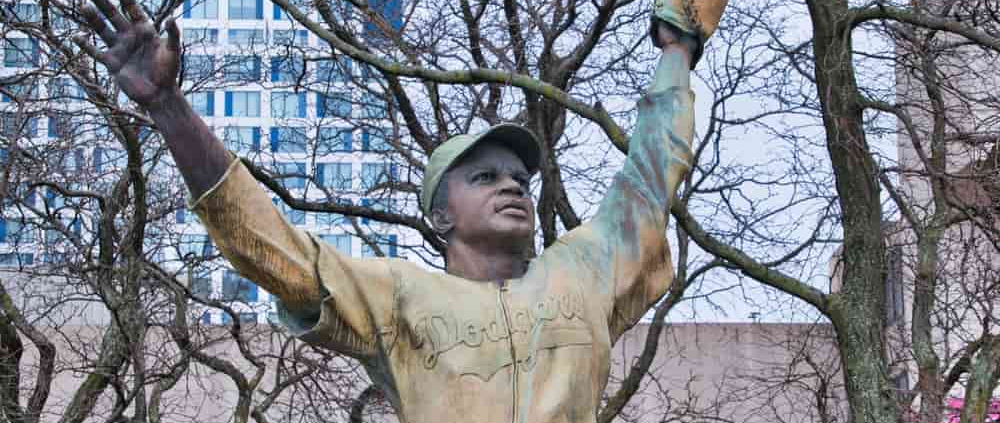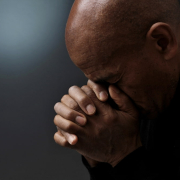The History of Diversity, Equality, and Inclusion in Sports in the United States of America
Jackie Robinson. Editorial credit: JMT Photography and Media / Shutterstock.com
The journey of diversity, equality, and inclusion (DEI) in sports within the United States is both complex and compelling, reflecting broader societal changes and struggles. From the early days of exclusion and segregation to modern efforts to address systemic inequalities, sports have mirrored the nation’s evolving attitudes towards race, gender, and other aspects of identity. This comprehensive analysis delves into the historical context, milestones, and current challenges of DEI in American sports, exploring new barriers and examining whether any sports are changing rules to benefit certain groups over others. Read more at www.askthelawyer.us. To read the complete analysis in our publication, click here, and on our civil rights blog, click here.
Early Exclusion and Segregation
Colonial and Early American Periods
In the colonial and early American periods, sports were primarily recreational activities enjoyed by the elite. These sports included horse racing, boxing, and cricket, which were largely inaccessible to marginalized groups such as African Americans, Native Americans, and women.
19th Century Developments
The 19th century saw the formal organization of sports, but these developments often reinforced existing social hierarchies.
African Americans
- Baseball: By the mid-1800s, baseball had become America’s pastime, but African American players were excluded from Major League Baseball (MLB). This led to the formation of separate leagues for black players, culminating in the creation of the Negro Leagues in the early 20th century.
Native Americans
- Carlisle Indian Industrial School: Established in 1879, this school used sports as a means of assimilation for Native American youth. The school’s football team, coached by Glenn “Pop” Warner, gained national fame, but the underlying purpose was to strip students of their cultural identities.
Women
- Women’s Sports: Women’s participation in sports was limited and often discouraged. Sports for women were viewed as unladylike, and opportunities were minimal. When women did participate, it was in more socially acceptable activities like tennis and golf.
Breaking Barriers: The Early 20th Century
Racial Integration
Jackie Robinson and Baseball
- Jackie Robinson: In 1947, Jackie Robinson broke the color barrier in MLB by joining the Brooklyn Dodgers. His success paved the way for other African American athletes and was a significant milestone in the fight against racial segregation in sports.
Integration in Other Sports
- NBA and NFL: The integration of African American athletes into the NBA and NFL followed in the 1950s and 1960s, with players like Bill Russell and Jim Brown becoming trailblazers in their respective sports.
Gender Equality
Early Women’s Sports Organizations
- Women’s Organizations: Organizations such as the Amateur Athletic Union (AAU) began to support women’s sports in the early 20th century, providing more opportunities for female athletes.
Title IX
- Title IX: Enacted in 1972, Title IX of the Education Amendments prohibited sex-based discrimination in federally funded education programs, including athletics. This landmark legislation dramatically increased opportunities for women in sports, leading to a surge in female athletic participation at the high school and collegiate levels.
LGBTQ+ Inclusion
Early Struggles
- Marginalization: LGBTQ+ athletes faced significant discrimination and were often forced to hide their identities. Early efforts to include LGBTQ+ athletes in mainstream sports were met with resistance.
Modern Milestones and Ongoing Challenges
Racial Diversity
Professional Leagues
- NBA: The NBA has become the most racially diverse major sports league in the United States, with a high percentage of African American and international players. Despite this, there is still underrepresentation in coaching and executive positions.
- NFL: Similar to the NBA, the NFL has a high percentage of African American players but struggles with diversity in leadership roles. The Rooney Rule, implemented in 2003, requires NFL teams to interview minority candidates for head coaching and senior football operation jobs, but its effectiveness is debated.
- MLB: MLB has a significant number of Latino players, but the percentage of African American players has declined over the past few decades. Programs like Reviving Baseball in Inner Cities (RBI) aim to address this issue.
Gender Equality
Title IX Impact
- High School and Collegiate Sports: Title IX led to a dramatic increase in female participation in high school and collegiate sports. The number of female athletes in the NCAA has risen significantly since its enactment.
Professional Women’s Sports
- WNBA and NWSL: Women’s professional leagues like the WNBA and NWSL have gained popularity, but disparities in funding, media coverage, and salaries compared to men’s leagues remain significant challenges.
LGBTQ+ Inclusion
Progress and Visibility
- Coming Out: High-profile athletes like Jason Collins (NBA) and Michael Sam (NFL) have publicly come out, helping to challenge stereotypes and increase visibility for LGBTQ+ athletes.
- Policies and Support: Sports organizations are increasingly adopting policies to support LGBTQ+ inclusion. The NCAA has guidelines for the inclusion of transgender athletes, and many professional leagues have LGBTQ+ advocacy programs.
Disability Inclusion
Adapted Sports and Paralympics
- Paralympics: The Paralympic Games have played a crucial role in raising the profile of athletes with disabilities. The United States consistently sends a large team to the Paralympics, and the visibility of these athletes helps challenge stereotypes.
- Collegiate Programs: At the collegiate level, there is a growing movement to include adapted sports programs, with organizations like Disabled Sports USA providing opportunities for athletes with disabilities.
New Barriers to DEI in Sports
Systemic Racism
Persistent Challenges
- Representation: Minority representation in leadership positions remains low across many sports. This includes coaching, executive roles, and sports media.
- Bias and Discrimination: Athletes of color often face bias and discrimination, both overt and subtle. This can affect their opportunities and treatment within the sports ecosystem.
Gender Inequality
Ongoing Issues
- Pay Gap: There is a significant pay gap between male and female athletes, even in sports where women have a large following, such as tennis and soccer.
- Media Coverage: Women’s sports receive less media coverage compared to men’s sports, impacting their visibility and revenue potential.
LGBTQ+ Discrimination
Specific Challenges
- Hostile Environments: Some sports environments can be hostile to LGBTQ+ athletes, leading to a lack of openly LGBTQ+ individuals in certain sports.
- Transgender Athletes: The inclusion of transgender athletes in sports is a contentious issue, with debates over fairness and competitive balance.
Accessibility for Athletes with Disabilities
Barriers to Participation
- Infrastructure: Many sports facilities are not fully accessible, limiting opportunities for athletes with disabilities.
- Funding: There is often less funding available for adapted sports programs compared to mainstream sports.
Initiatives and Programs Promoting DEI in American Sports
Professional Sports Leagues
NBA
- NBA Foundation: Focuses on economic empowerment in Black communities.
- Basketball Africa League: Promotes basketball development in Africa.
NFL
- Rooney Rule: Promotes diversity in coaching and executive positions.
- Inspire Change Program: Supports social justice and racial equality.
MLB
- RBI Program: Aims to increase participation in baseball among inner-city youth, particularly African American and Latino communities.
Collegiate Sports
Title IX Compliance
- Equal Opportunities: Ensures equal opportunities for male and female athletes.
- Diversity Officers: Many collegiate athletic programs have appointed diversity officers to promote inclusion and address issues of discrimination and bias.
Grassroots and Community Programs
Local Leagues and Clubs
- Inclusive Practices: Local sports leagues and clubs focus on inclusive practices, such as offering programs for athletes with disabilities and creating safe spaces for LGBTQ+ athletes.
Youth Sports Programs
- Girls on the Run: Promotes inclusion and provides opportunities for underrepresented groups to participate in sports.
- YMCA Sports Programs: Offer inclusive sports opportunities for children of all backgrounds.
Case Studies
Jackie Robinson’s Legacy
- Impact on Baseball: Jackie Robinson’s integration into MLB in 1947 was a watershed moment for racial integration in sports. His success paved the way for future generations of African American athletes and highlighted the need for racial equality in sports.
Title IX and Women’s Sports
- Transformative Impact: Title IX has had a transformative impact on women’s sports in the United States. Female participation in high school and collegiate sports has skyrocketed, and the profile of women’s sports has been raised significantly.
The Rooney Rule and NFL Diversity
- Effectiveness: The Rooney Rule has had mixed success in increasing the diversity of candidates interviewed and hired for coaching and executive positions. Recent updates aim to improve its impact.
LGBTQ+ Inclusion: Jason Collins and Beyond
- Visibility and Acceptance: Jason Collins’ coming out in 2013 was a significant milestone for LGBTQ+ visibility in sports. Since then, other athletes have followed suit, contributing to a more inclusive environment.
Paralympics and Disability Sports
- Raising Profile: The Paralympics have significantly raised the profile of athletes with disabilities, challenging stereotypes and promoting greater inclusion. Organizations like Disabled Sports USA provide critical support for these athletes.
Future Prospects for DEI in American Sports
Increasing Representation
Leadership Roles
- Proactive Recruitment: Efforts to increase representation of underrepresented groups in leadership positions within sports organizations must continue.
- Mentorship Programs: Mentorship programs can help create pathways for diverse candidates to advance.
Addressing Systemic Racism
Multifaceted Approach
- Education and Policy Changes: Addressing systemic racism requires a multifaceted approach, including education, policy changes, and fostering a culture of inclusivity.
- Community Engagement: Engaging with communities to promote diversity and inclusion at the grassroots level is crucial.
Gender Equality
Pay Equity
- Advocacy and Policy: Continued advocacy and policy changes are needed to address the pay gap between male and female athletes.
Media Coverage
- Increased Visibility: Efforts to increase media coverage of women’s sports can help raise their profile and revenue potential.
LGBTQ+ Inclusion
Supportive Environments
- Inclusive Policies: Sports organizations should continue to adopt and enforce policies that support LGBTQ+ inclusion.
Transgender Athletes
- Fairness and Inclusion: Developing fair and inclusive policies for the participation of transgender athletes is essential to address this complex issue.
Disability Inclusion
Infrastructure Improvements
- Accessibility: Improving infrastructure to make sports facilities fully accessible is crucial for promoting participation among athletes with disabilities.
Funding
- Support for Adapted Sports: Increased funding and support for adapted sports programs can help provide more opportunities for athletes with disabilities.
New Barriers in Certain States
Legislative Barriers
Anti-Transgender Legislation
- State Laws: Some states have passed or proposed laws that restrict the participation of transgender athletes in sports. These laws often target youth sports and raise significant concerns about fairness and inclusion.
Impact on Athletes
- Talent Suppression: Such legislation can suppress the talent of transgender athletes by preventing them from competing in their preferred gender category, which can impact their ability to earn scholarships and pursue professional careers.
Economic Barriers
Funding Inequities
- Resource Allocation: In some states, there are significant disparities in funding for sports programs, particularly between affluent and low-income communities. This can limit opportunities for talented athletes from underprivileged backgrounds.
Changing Rules in Sports
Concerns About Bias
- Rule Changes: There have been allegations and concerns about rule changes in certain sports that may disproportionately benefit one group over another. However, these claims are often complex and require careful analysis to determine their validity.
Addressing Bias in Rule Changes
Transparency and Accountability
- Fair Play: Ensuring transparency and accountability in the rule-making process can help address concerns about bias and maintain fairness in sports.
Conclusion
The history of diversity, equality, and inclusion in sports in the United States is marked by significant progress and ongoing challenges. From the early days of exclusion and segregation to modern efforts to promote DEI, sports have mirrored and influenced broader societal changes. Despite advancements, systemic racism, gender inequality, LGBTQ+ discrimination, and barriers for athletes with disabilities remain pressing issues.
Future efforts must focus on increasing representation, addressing systemic inequalities, and promoting inclusive policies and practices. By continuing to advocate for DEI in sports, we can create a more equitable and inclusive environment for all athletes, reflecting the true spirit of sportsmanship and competition.









Leave a Reply
Want to join the discussion?Feel free to contribute!